Fractal Axe FX 3 Review
|
I was looking to update my home studio with some kind of modeling device that would eliminate the need for miking amps and also provide a lot of different effects and sounds. For months I poured over
the Fractal Axe FX3m FM3, FM 9, Kemper profiling units and a few Helix offerings. I decided to take the AXE FX plunge although the Kemper was a close second for my needs. The Axe is mostly focused on tube
amps and uses detailed models of the pre-amps, tone stacks and amps along with IR's of speakers and cabinets as opposed to the profiling capabilities of the Kemper units. I think Axe has the edge in effects
quality and tweaking whereas the Kemper is easier to dial in a given amp sound and many steel amp profiles are available for it. At his point I have no interest in a real amp for the Axe in my studio as I
just use it for recording. My setup however does include a pair of powered Yamaha HS8's if I wanted to get a live sound instead of the headphones. This setup has a few great advantages including the fact that no microphones
are required and it is fully stereo. What I hear in the headphones is exactly what gets recorded. Another advantage is the elimination of a myriad of effects boxes and for dual instrument players, two amp setup are not needed as
they are already in the Axe!
The sound samples I've posted below are where I'm at with this unit after about 8 days of experiments and learning. I've found the effects to be stellar and the amps to be biased toward a bit of distorting even at low levels. You will hear some distortion in the guitar samples below but I've since learned how to get clean sounds out of the guitar amps by adjusting various parameters such as the master volume settings. I've selected the Fender Super Reverb amp and mated it with four 10" speakers for the guitar samples. I connect the Axe directly to a Zoom R24, no additional pre-amps needed and no hum even with using unbalanced guitar cables. For recording songs I create Drum tracks with EZDrummer 2 in Reaper then port the drums to the R24 where I lay down live Steel guitar, guitar, bass and other instrument tracks. At times I use BIAB RealBand for piano and fiddle parts and port those to Reaper. My live instrument tracks are taken back to Reaper where all the final mastering is done and then rendered as a 320 kbps mp3 file. This may sound cumbersome but in practice it's quite fast and simple to execute. The Axe is capable of creating a decent steel guitar dobro effect and I hope to record and post that below. Over time I hope to add in the Eminence Paul Franklin speaker IR's to a few of steel amp sounds. These and other steel guitar speaker IR's are readily available from the Eminence web site here:
|

|
|
FX 3 Programming for guitar
|
The first screen shot below shows the entire preset I used for my guitar samples and the settings for GEQ2. All the effects are on one of the 8 screens of a preset! Any effect can be enabled or bypassed using the foot controller or the laptop/ipad running Axe Edit or directly on the Axe FX 3. I've shown a few sample screens from the setup but suffice to say that any setting can be easily accessed and even the Axe screens themselves can be customized. Settings include simple ones like reverb level, reverb tone, delay settings to more complex ones like power supply sag, reverb room sizes and reflections etc. I included two 10 band graphic EQs in my setup. One is switchable as needed and the other is there to tailor the overall sound of the preset. The rotary, like all the effects, has detailed settings for things like rotor length, ramp up and down times, amp drive, rotor and drum speeds etc. The effect chain is:
Input, Compressor, Phaser, graphic EQ1, graphic EQ2, Drive, Amp (Super Reverb in this case), CAB (IR for four 10" speakers),
Panning Tremolo, Pitch (used for Octave effect in this case), Chorus, Volume pedal (controlled by FC-2 foot volume), Send/Return just to continue the chain
on the next line, Enhancer, Flanger, Delay, Rotary, Reverb, Output block to send signal to output 1.
|
Guitar Sound Samples (Fender Nashville tele) |
| Hall Reverb |
| Spring Reverb |
| Compressor set on "QUACK"! |
| Chorus |
| Rotary |
| Delay |
| Overdrive |
| Enhancer effect |
| Flanger |
| Octave |
| Phaser |
| Panning tremolo |

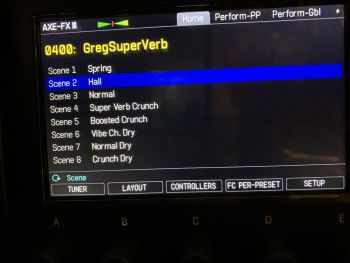 |
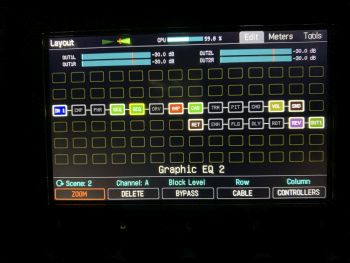 |
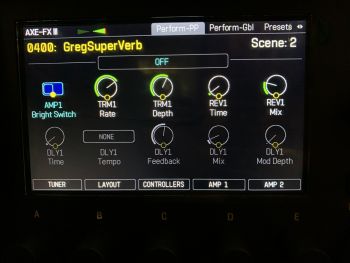 |
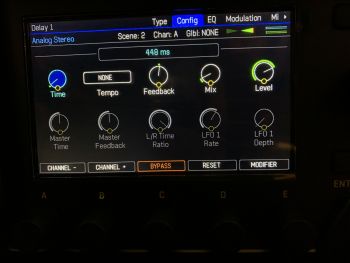 |
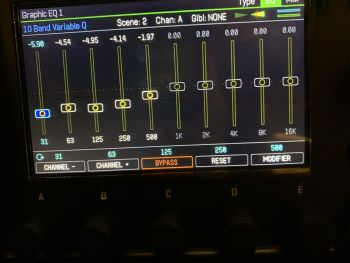 |
|
Foot Control layout
|
The foot controller is unbelievably powerful and yet easy to use! I've customized mine to just controlling the effects on a given preset. There are 8 screen layouts on the foot controller
and a simple press of the two right buttons switches between them. Each switch can also have a press setting and a hold setting. I've set the hold setting to one second and denoted the hold functions below.
Left click the pictures to see larger images. The foot switch unit is powered and controlled by a single cable from the FX 3. No separate power supply is needed and all setups are in the FX 3.
|
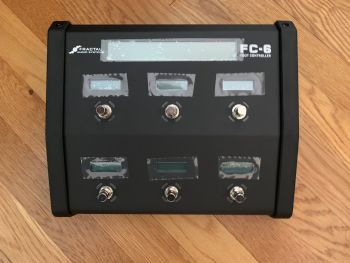 |
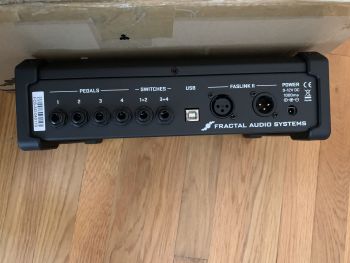 |
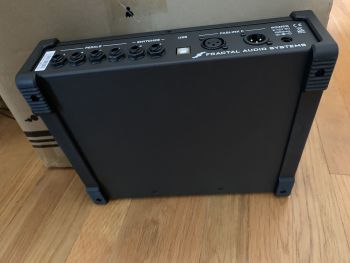 |
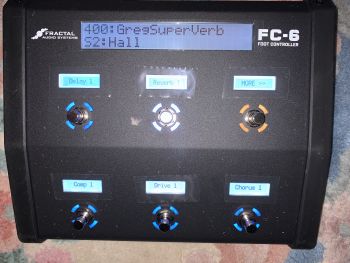 |
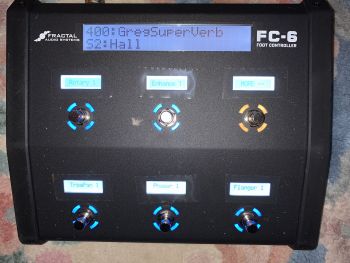 |
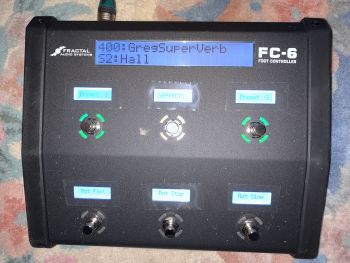 |
||||
|
FX 3 Programming for Pedal Steel
|
The first screen shot below shows the entire preset I used for my pedal steel guitar samples. All the effects are on one of the 8 screens of a preset! Any effect can be enabled or bypassed using the foot controller or the laptop/ipad running Axe Edit or directly on the Axe FX 3. I've shown a few sample screens from the setup but suffice to say that any setting can be easily accessed and even the Axe screens themselves can be customized. Settings include simple ones like reverb level, reverb tone, delay settings to more complex ones like power supply sag, reverb room sizes and reflections etc. I included two 10 band graphic EQs in my setup. One is switchable as needed and the other is there to tailor the overall sound of the preset. The rotary, like all the effects, has detailed settings for things like rotor length, ramp up and down times, amp drive, rotor and drum speeds etc. Out of the hundreds of Cab/Speaker combos (cab IR's), reverbs and amps available I found 3 of each that I liked best for pedal steel. I took me a while to dial most of the distortion out of the amps that I chose. That was mostly accomplished by minimizing the input trim and maximizing the internal (drive) level settings for the selected amps (see screen shot below). I takes a little guesswork to estimate what a preset should sound like through my headphones to eventually be usable when played back on speakers. There is an IR cab mixer built into the Axe FX 3 so it's possible to blend 4 different cabs together through a built in cab mixer. In my case I just paired one amp with one cab with one reverb for each preset. In addition to the built in IR cab mixers, each block can have 4 channels and each preset can have 8 scenes. Add to this the power in the foot controller and you have the ability to select any combination of effects, EQ, amps and cabs on the fly for a live performance. I am only two weeks into figuring this thing out! There are tons of things to learn and I've not covered much of what I've learned because the capability and programming flexibility of the Axe FX 3 is well documented on the net. No need to present any kind of tutorial here. For example, there is a "Tone Match" capability that can help you match the tone of an existing rig and the ability to import amps, cabs and presets from many other sources. A few speaker manufacturers have made IR's of their steel guitar speakers that can easily be downloaded into the Axe FX 3. While I like the power of the Axe FX 3 I do believe the FM9 or even the FM3 will be plenty of power for live gigs and perhaps in a more stage friendly form factor. Reverbs:
Amps:
Cabs:
The effect chain is:
Input, Compressor, Phaser, graphic EQ1, graphic EQ2, Drive, Amp (one of three), CAB (one of three),
Panning Tremolo, Pitch (used for Octave effect in this case), Chorus, Volume (block bypassed), Send/Return just to continue the chain
on the next line, Enhancer, Flanger, Delay, Rotary, Reverb (one of 3), Output block to send signal to output 1.
|
Pedal Steel Sound Samples (MSA Legend, TruTone Pickups)REALLY happy with the Delay and the second VibraVerb (CB) samples as they were my final tweaks! (First Letter denotes amp channel and second letter denotes the cab channel as listed above) |

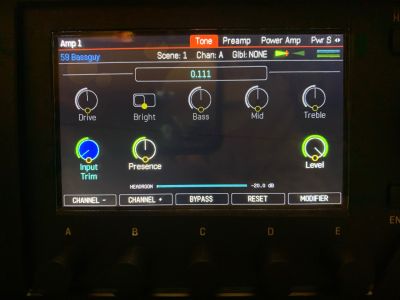 |
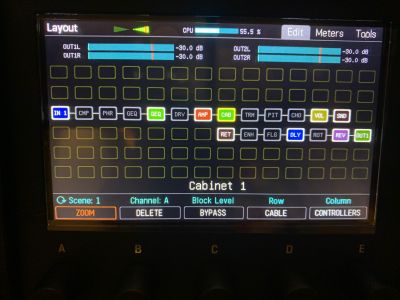 |
|
Paul Franklin Eminence PF350 IR Samples
|
Eminence sells impulse responses of their Paul Franklin signature PF350 (12") and PF400 (15") speakers. These IR's are just response files that profile the speaker mounted in cabinet (usually) and picked up by a certain mic placed in a certain position. In this case the IR's are available for three different sample frequencies (Fractal Axe uses 48 kHz) and with 7 different mic models and placement locations. They sell for a great price and are easily loaded into user CAB's on the Axe FX 3. The whole purchase and load process took me about 10 minutes. I chose the PF350 12" speaker for my samples because it seems to be the most popular. I've included all 7 PF350 IR samples that I recorded using identical Axe setups below. The PF350 IR's are far and away the best sounding for pedal steel that I've tried including the hundred or so that I sampled from the AXE. They have less distortion, a full clear sound and a very even response from top to bottom (as advertised!). I intend to use these for my future recordings. |
Pedal Steel Sound Samples with PF350 speaker IR's |
| Shure 57 on-axis |
| Shure 57 off-axis |
| Royer R-101 ribbon |
| 57/Royer combination |
| Sennheiser 421 |
| Sennheiser 906b |
| Neumann U 87 large-diaphragm condenser |
|
Pictures of the rack and tweed enclosure
 |
 |
 |
 |
 |
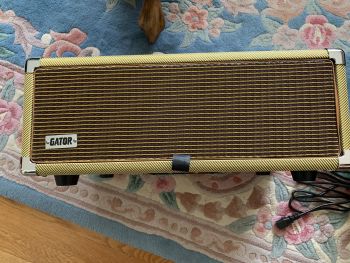 |
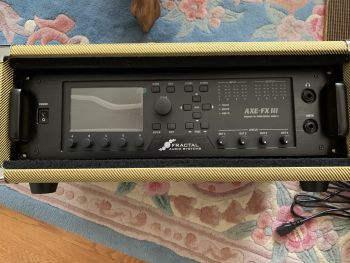 |
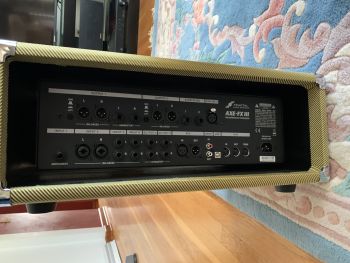 |
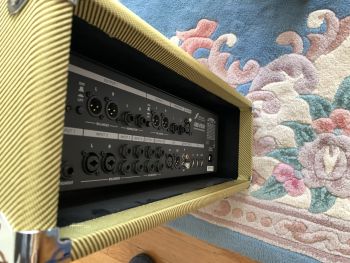 |
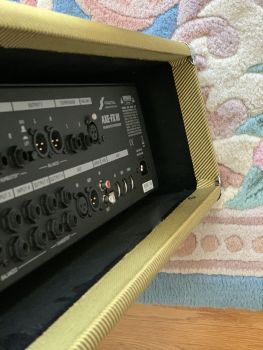 |
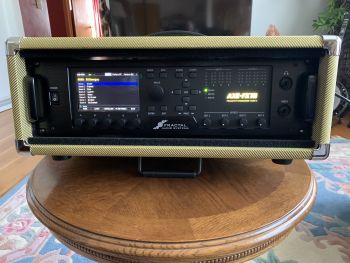 |
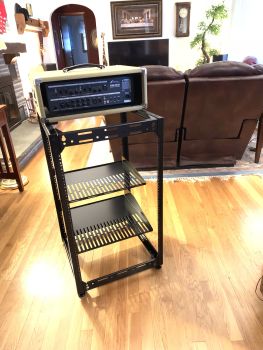 |
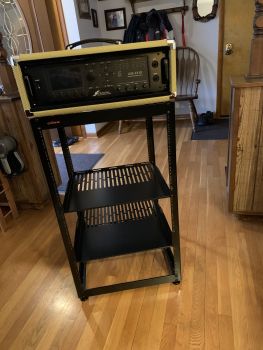 |
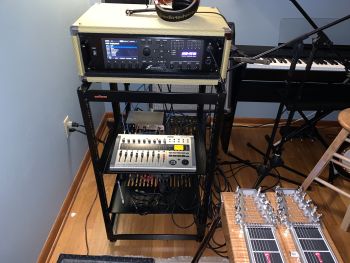 |
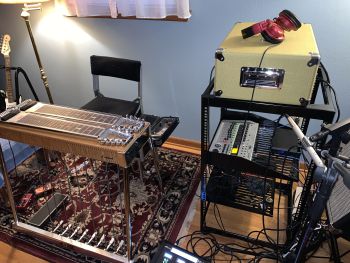 |
|
Pictures of the FX 3, EV-2 foot volume
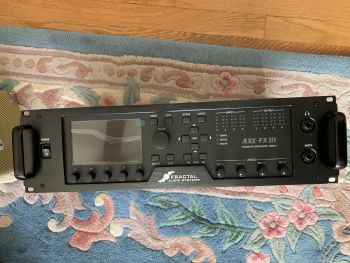 |
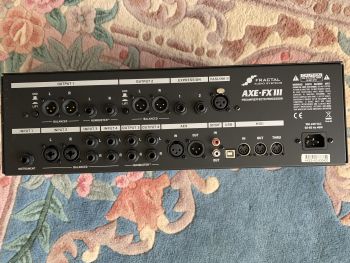 |
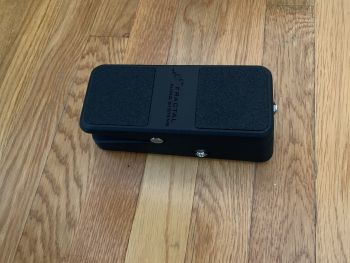 |
 |
 |
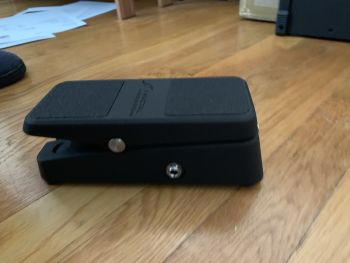 |
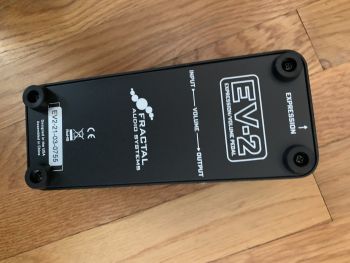 |
|||
|